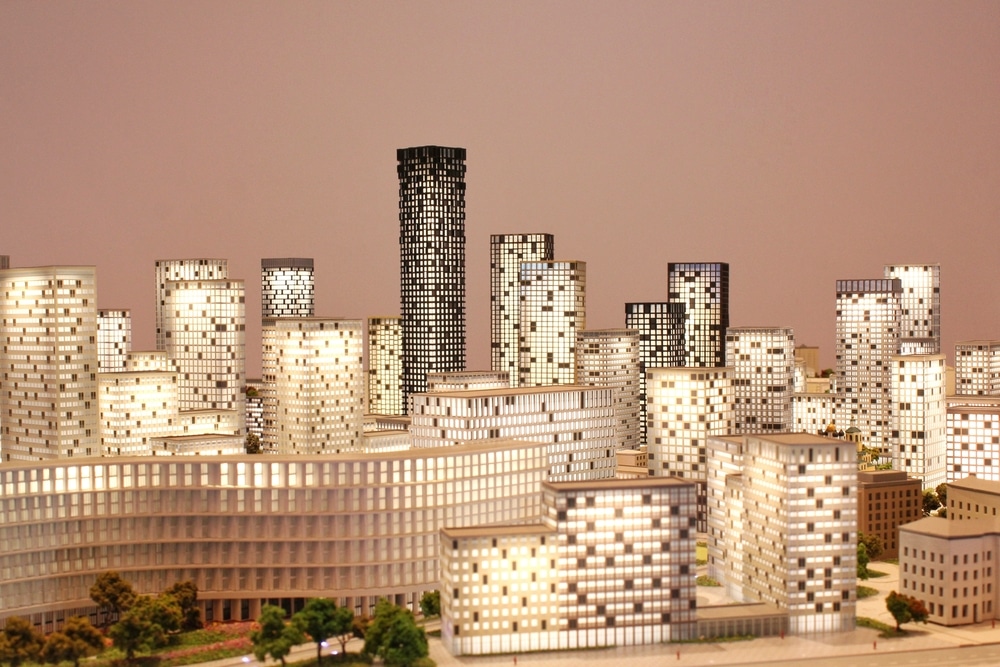Future City Competition
The Future City Competition is a nationwide, multi-disciplinary engineering and technology competition for 6th, 7th, and 8th-grade students. The competition challenges teams of students to design and build models of cities of the future and present their vision through a variety of media, including written essays, presentations, and physical models.
The competition is designed to encourage students to think critically and creatively about urban environments’ problems and to develop solutions that balance technological advancements with social and environmental concerns.
When was the first Future City Competition started?
When was the very first competition for the Future City format held? The National Engineers Week Future City Competition staged the inaugural Future City Competition in 1992. The competition was created to encourage middle school students to pursue careers in science, technology, engineering, and mathematics (STEM).
What are the parts of the Future City Competition?
What exactly are the segments that are included in the Future City Competition? The competition is structured as a three-part challenge, each part of which requires students to demonstrate different skills and knowledge related to STEM fields. In this part of the article, we will explore each of the three parts of the Future City Competition in greater detail.
Part 1: Research and Proposal
The first part of the Future City Competition challenges teams of students to research a specific urban problem and develop a proposal for a solution. Teams are asked to choose a problem that is relevant to the future of cities, such as overpopulation, transportation, energy, or environmental sustainability.
Teams are then asked to research the problem in detail, considering the social, economic, and environmental implications of their design. The proposal must include a written essay that describes the problem and the solution.
Part 2: Physical Model
The second part of the Future City Competition challenges teams to build a physical model of their city using recycled materials.
The model must include details such as transportation systems, housing developments, and green spaces. It must demonstrate the team’s understanding of the design principles and engineering concepts involved in building a sustainable urban environment.
The physical model should accurately reflect the team’s proposed solution, including the details of their transportation systems, housing developments, and green spaces. The model should be visually appealing, demonstrating the team’s creativity and attention to detail.
Part 3: Presentation and Public Speaking
The final part of the Future City Competition is a public presentation and Q&A session, where teams are asked to showcase their city model and explain the key features of their design to a panel of judges.
Teams are required to make a verbal presentation to the judges, highlighting the main elements of their design and explaining the reasoning behind their decisions.
In this part of the competition, teams are also expected to demonstrate their public speaking skills and their ability to communicate effectively with others. Teams must be able to respond to questions from the judges and provide clear and concise explanations of their design choices and their vision for the future city.
How to join the Future City Competition?
How can one take part in the Competition for the Future City? Students from across the country continue to be challenged and inspired by the annual competition. The competition was created to educate and motivate the future generation of STEM leaders.
The following steps are what you need to take in order to participate in the Future City Competition if you are interested in doing so:
Step 1: Form a Team
The formation of a team is the first thing that has to be done in order to take part in the Future City Competition. Teams are normally composed of three to five students, and they can be assembled in the classroom or through participation in a community-based youth activity.
It is essential to select team members who are driven, eager, and dedicated to cooperating with one another to come up with a unique and original solution to a problem that actually exists in the real world.
Step 2: Register for the Competition
After you have put together a team, the next thing you need to do is sign up for the tournament. Teams are required to register on the official Future City Competition website in order to participate in the registration process, which takes place in the autumn season normally.
The whole process of registration is on the website, which includes information on deadlines, costs, and eligibility conditions.
In the spring, participants will be able to begin registering for the 2023-2024 Future City Competition.
Step 3: Choose a Problem and Develop a Solution
The next thing that has to be done in order to advance in the Future City Competition is to come up with a solution to a problem that is pertinent to the future of cities.
The competition enables teams to select a challenge that pertains to a topic of particular interest to them, such as transportation, energy, environmental sustainability, or another subject.
The next step for the teams is to do an in-depth study on the issue and formulate a solution plan, which must include both a written essay and a physical model of the team’s city.
Step 4: Build a Physical Model
The physical model of the team’s city must be constructed out of recycled materials for the next phase of the Future City Competition.
Each team is required to demonstrate a grasp of the fundamentals of design as well as the technical ideas involved in the construction of a sustainable urban environment.
For the purpose of bringing their ideas to life, teams are strongly encouraged to make use of a wide range of resources and technology, such as 3D printing, computer-generated design components, and other types of digital media.
Step 5: Prepare for the Presentation and Public Speaking
The Future City Competition comes to a close with a public presentation and question and answer session. During this phase, teams are requested to demonstrate their city models to a panel of judges and discuss the salient points of their architectural concepts.
Teams are required to prepare for this portion of the competition by honing their talents in public speaking and coming up with explanations that are both clear and succinct of the design decisions they made and the vision they have for the city in the future.
How to stand out in the Future City Competition?
How to distinguish yourself from the other competitors in the Future City Competition? The competition provides students with a unique opportunity to showcase their skills and knowledge in a variety of STEM fields, including research and writing, design and engineering, and public speaking. To stand out in this competition, it is important for students to go above and beyond in their preparation and presentation.
Here are some tips for standing out in the Future City Competition:
Choose a Unique Problem
To set yourself apart from the other competitors, it is essential to focus on a singular challenge that has some bearing on the urban landscape of the future. It is crucial for teams to identify a challenge that is not just significant to them but also intriguing to them and one that they are enthusiastic about resolving.
Teams are able to display their inventiveness and innovation to the judges by concentrating on a specific challenge, and they may also illustrate how their solution is distinct from those proposed by other teams.
Conduct Thorough Research
Thorough research is key to standing out in the Future City Competition. Teams must conduct extensive research on the problem they have chosen, and they must be able to explain their findings in a clear and concise manner. Teams should use a variety of sources to gather information, including books, articles, online resources, and interviews with experts in the field.
Develop a Creative and Innovative Solution
To stand out in the competition, it is important to develop a creative and innovative solution to the problem. Teams should think outside the box and come up with a solution that is unique and has the potential to make a positive impact on the future of cities. Teams should also focus on making their solution practical and feasible, and they should consider the environmental, social, and economic impacts of their design.
Build an Impressive Physical Model
The physical model is an important part of the Future City Competition, and it is a great opportunity for teams to showcase their skills and creativity. Teams should build a model that is both visually appealing and functional, and that accurately represents their vision for the future city.
Prepare for the Presentation and Public Speaking
The final part of the Future City Competition is a public presentation and Q&A session, where teams are asked to showcase their city model and explain the key features of their design to a panel of judges.
To stand out in this part of the competition, teams must be prepared for the presentation and public speaking, and they must be able to explain their design choices and vision for the future city in a clear and concise manner. Teams should practice their public speaking skills and prepare for questions from the judges.
What are the prizes at stake at the Future City Competition?
What kinds of awards will be given to the winners of the Future City Competition? The prizes at stake in the competition are designed to recognize and reward students for their hard work and dedication, and to encourage their continued interest in STEM fields.
Here are some of the prizes available at the Future City Competition:
National Winner Prizes
The National Winner Prizes are awarded to the top teams in the competition. The top award includes $7,500 for the winning organization’s STEM program and a trip to U.S. Space Camp in Huntsville, AL. The second-place award is $5,000; the third-place winner receives $2,000; and fourth and fifth-place teams each receive $750 for their programs.
Regional Winner Prizes
Regional Winner Prizes are awarded to the top teams in each of the competition’s regional events. All of the regional winning teams – three student presenters, an educator, and a mentor – are provided transportation, hotel accommodations, and some meals at the finals in D.C.
Regional Winners are recognized for their outstanding achievements in the competition, and they have the opportunity to compete against teams from across the United States in the National Finals.
Special Prizes
In addition to the National and Regional Winner Prizes, the Future City Competition also offers a variety of special prizes for participants. These prizes are awarded for specific achievements in the competition, such as excellence in research and writing, outstanding public speaking, or exceptional creativity in design.
The special prizes are designed to recognize and reward the efforts of individual students and teams, and to encourage their continued interest in STEM fields.
AdmissionSight is willing to help
The Future City Competition is a valuable and rewarding experience for middle school students, offering them a unique opportunity to engage with technology, engineering, and science, and to explore their interests in these fields. By encouraging creativity, critical thinking, and problem-solving skills, the competition helps to prepare students for success in the 21st century and beyond. It is an excellent way to get involved in STEM education and to inspire the next generation of leaders in technology and engineering.
While we’re on the subject of being well-informed and innovative, you should seek the advice of specialists who specialize in the field of college admissions, such as those at AdmissionSight, to improve your chances of acceptance.
We at AdmissionSight would be happy to assist you in realizing your goal. AdmissionSight has become the most trusted name in the field of college admissions advice as a result of its more than a decade of expertise assisting students just like you in gaining admission to the colleges of their first and second preferences.
Please get in touch with us as soon as you can so that we can schedule an initial consultation that will be provided free of charge.









































